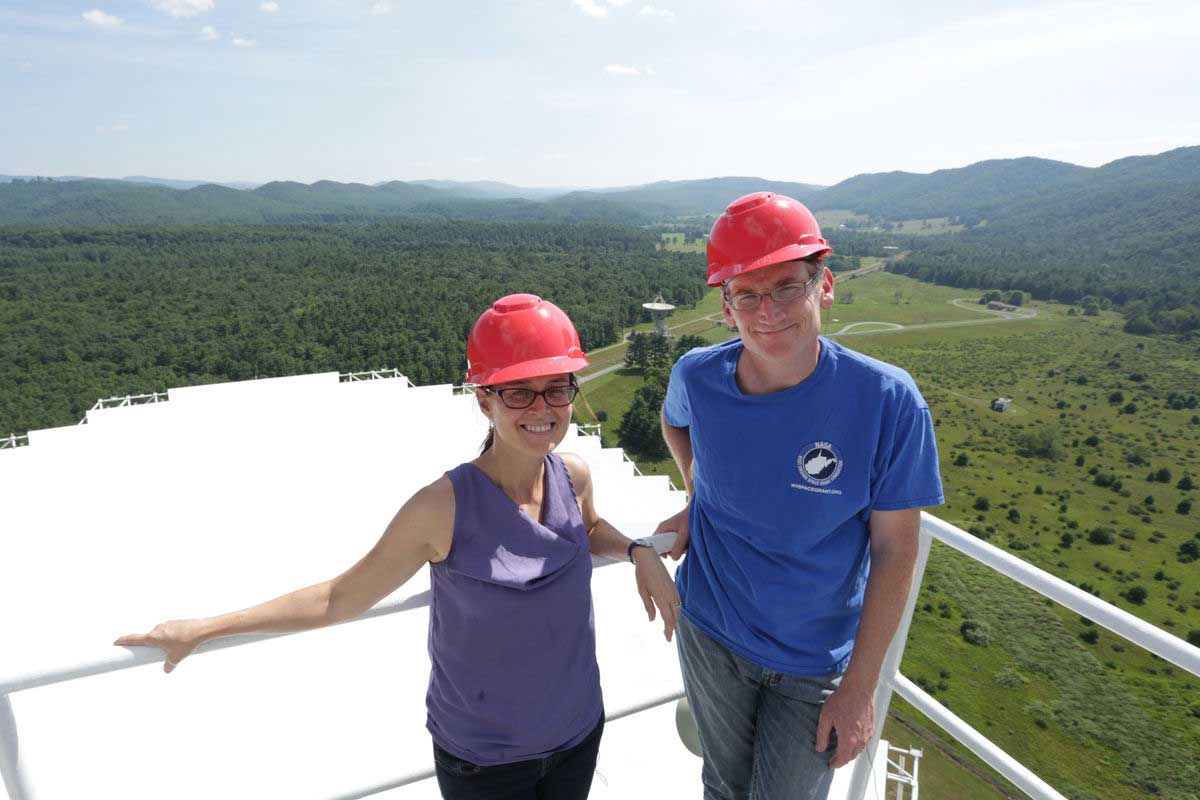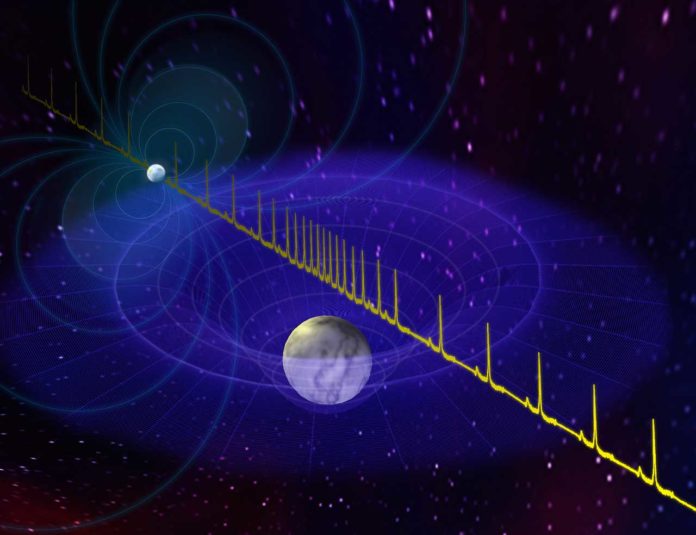Recently, astronomers have made a breakthrough discovery using the Green Bank Telescope in Pocahontas County. Astronomers have spotted the most massive neutron star to date, approximately 4,600 light-years from Earth.
The neutron star, called J0740+6620, is a rapidly spinning pulsar that packs 2.17 times the mass of the sun (which is 333,000 times the mass of the Earth) into a sphere only 20-30 kilometers, or about 15 miles, across.
Maura McLaughlin, study author and Eberly Distinguished Professor of physics and astronomy at West Virginia University, said, “At Green Bank, we’re trying to detect gravitational waves from pulsars. To do that, we need to observe lots of millisecond pulsars, which are rapidly rotating neutron stars. This is not a gravitational wave detection paper but one of many important results which have arisen from our observations.”
Astronomers also measured the mass of the pulsar using a phenomenon called Shapiro Delay. In essence, gravity from a white dwarf companion star warps the space surrounding it, following Einstein’s general theory of relativity. This makes the pulses from the pulsar travel just a little bit farther as they travel through the distorted spacetime around the white dwarf. This delay tells them the mass of the white dwarf, which in turn provides a mass measurement of the neutron star.

Eberly Distinguished Professor of Physics and Astronomy Maura McLaughlin said, “These stars are very exotic. We don’t know what they’re made of, and one essential question is, ‘How massive can you make one of these stars?’ It has implications for very exotic material that we simply can’t create in a laboratory on Earth.”
Pulsars get their name because twin beams of radio waves they discharge from their magnetic poles. These beams sweep across space in a lighthouse-like style. Some pivot multiple times each second.
Since pulsars spin with such incredible speed and regularity, astronomers can utilize them as what might be compared to atomic clocks. Such exact timekeeping enables astronomers to consider the nature of spacetime, measure the masses of stellar objects, and improve their comprehension of general relativity.
Journal Reference
- Cromartie, H.T., Fonseca, E., Ransom, S.M. et al. Relativistic Shapiro delay measurements of an extremely massive millisecond pulsar. Nat Astron 4, 72–76 (2020). DOI: 10.1038/s41550-019-0880-2
